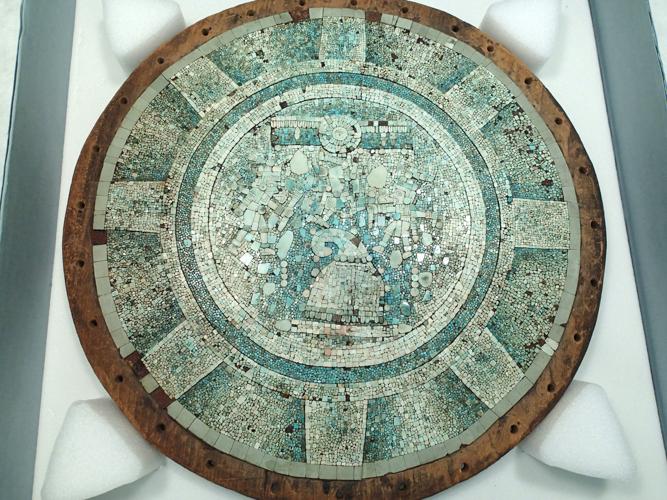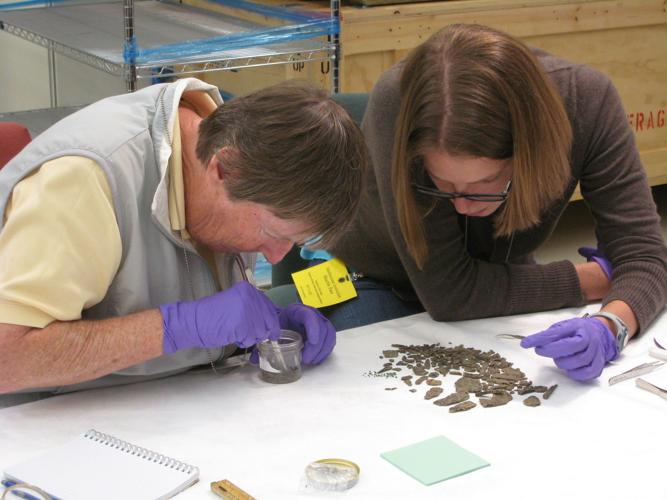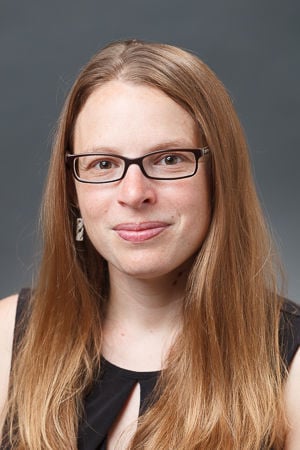When you look at turquoise, the blue-green mineral usually embedded with crawling black metallic veins and sparkling pyrite, you probably think of the American Southwest.
But turquoise was also used by many other cultures, including civilizations in Mesoamerica, the region from central Mexico to central South America. Anthropologists presumed the Aztecs and Mixtecs of the region imported turquoise as part of a larger trade network with people who lived in what is now the American Southwest for hundreds of years before the Spanish invaded in the early 1500s.
New research by Alyson Thibodeau, who graduated from the University of Arizona with a Ph.D. in geosciences in 2012 and studied Southwestern turquoise deposits as part of her doctoral work, suggests that Mesoamericans used locally-mined turquoise, overturning the more than 150-year-old assumption that it was imported.
Thibodeau is now an assistant professor of earth sciences at Dickinson College in Pennsylvania.
Her new research is based on work she did with UA anthropologist David Killick, UA College of Science dean and geosciences professor Joaquin Ruiz, and collaborators from California State University at San Bernardino and the Museo del Templo Mayor in Mexico City.
Turquoise, or xihuitl, “figures prominently in Aztec poetry, ritual, and cosmology,” according to the study. It was used in mosaics, jewelry, ceremonial shields and more.
Making the mineral
Copper deposits form deep in the earth. Natural movement of the earth’s crust can lift copper toward the surface, where it can interact with groundwater.
Water weathers copper, changing it chemically. Under certain conditions, new minerals, such as turquoise, are left in its wake.
During the process, turquoise acquires a geochemical signature matching the environment in which it formed, like a chemical ZIP code that matches other rocks and minerals in the area, Thibodeau determined during her Ph.D. work.
She gathered and analyzed turquoise samples from deposits throughout Southern Arizona.
“By the end of my dissertation, I had a ton of empirical data across the Southwest,” she said.
For this study, Thibodeau analyzed turquoise samples gathered from Aztec and Mixtec cultures from the period right before Spanish contact and compared it to deposits in the Southwest.
The Mesoamerican samples had chemical signatures that were “not only different from what we detected in Southwestern examples of turquoise,” she said, but they also “matched very well with the copper deposits throughout Mesoamerica.”
The implications
“It’s not safe to make the assumption that (Mesoamerican turquoise) comes from the Southwest anymore. At least in this one time and place, this doesn’t appear to be true,” she said. “You should be skeptical of that longstanding claim.”
However, it is established that there were other forms of trade between the regions.
In this region, there is evidence of the ritual consumption of cacao (chocolate) and the presence of scarlet macaws, both of which are not native, she said.
“It was largely assumed that turquoise was going in the opposite direction, but no one has ever substantiated that claim with evidence,” she said, which is why her study is so significant.
But if turquoise used by Mesoamericans was locally sourced, then where are the mines?
Turquoise mines and copper mines can be small features on the landscape, she said, and there are examples of these smaller mines being destroyed by open-pit copper mining or other modifications.
“It’s possible that people will find these mines, but it’s also possible they won’t,” she said. “I think the important part of geochemistry is that you don’t necessarily need a mine to compare artifacts to. It’s not required to come to this conclusion.”
Next, Thibodeau wants to follow up with a similar study get a more complete picture of trade between cultures in the Americas by probing turquoise from a wider period of time or cultures in Mesoamerica.












